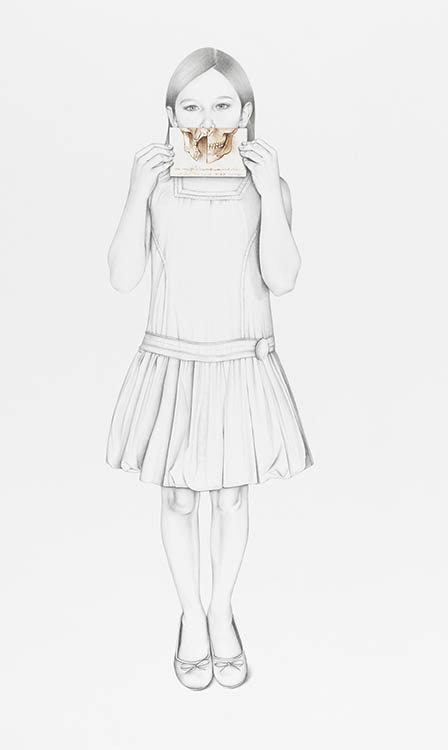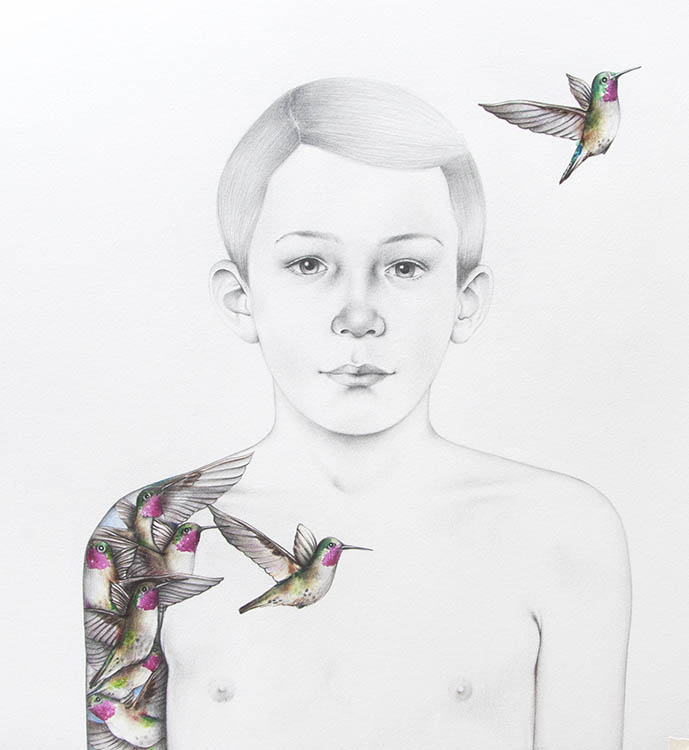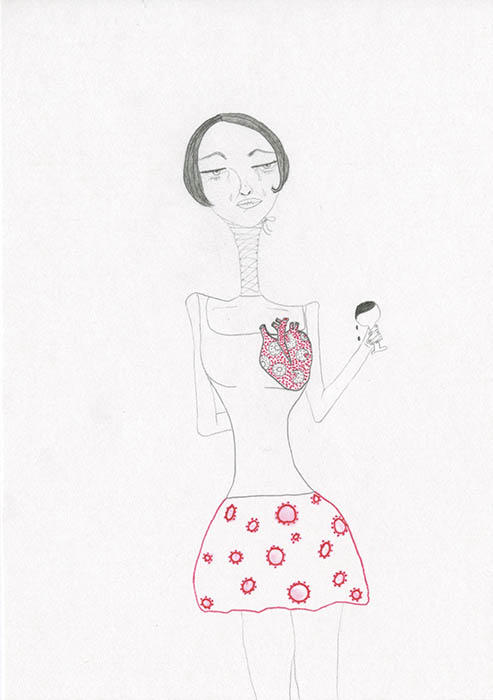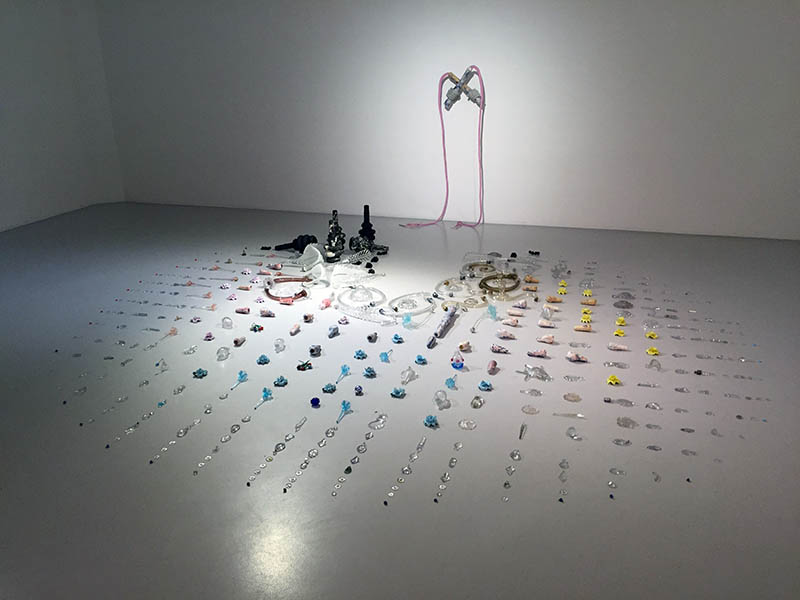Heike Schildhauer
Matteo Pagani
Tania Moya
Metaphors
With a realism which nevertheless keeps a foot in the surrealist language of illustration, Matteo Pagani draws children who are young only in their bodies. Their poses, behaviour and unflinching regard place these enigmatic characters in the world of adults. There is no ornamentation or context, the small girls and boys stand out against the white of the paper and, alone, tell a story often inspired by life experiences and emotions. Humour, sometimes rather sardonic, and tenderness set the tone of these works. But the artist offers a rather troubling portrait of childhood: a seriousness in the depths of the eyes, and the games which treat death with a worrying insouciance. Nonetheless, it’s thanks to the almost sullen determination and total integrity of the actions and sentiments portrayed, that the artist has captured the essence of childhood. His work as an illustrator gives a dimension in which imagination has no limits and stories are continually proposed. The absence of superfluous details also means that the pictures work like epigrams or proverbs which the observer is invited to solve.
Heike Schildhauer travels between myth and legend, tradition and memory, linked by death hinted at or present. Sequences of drawings, objects, sculptures, installations and ceramics revisit notions of heroes and ritual, but reconnect them to contemporary or private dilemmas making them timeless and universal. A functional or religious object is transformed by using unexpected materials or by enlarging it, which emphasises its original purpose while changing its meaning and producing an image with emblematic status. A primitive cudgel thus becomes a fragile ceramic trinket made of mixed earth. (This is a technique whereby earth of different colours is mixed to produce a design which is then shaped by the artist).
The hunting lodge made from stacked tables and lamps becomes a huge piece of furniture. The theme of death multiplies its manifestations in the works of Heike Schildhauer, from nutcrackers dancing the cycle of life to the post-mortem celebration of a sick brother in grisaille drawings showing here the god Pan, and there installations depicting the experience of impending death. Heike Schildhauer often expresses her imagination in theatrical guise. An example are the photographs in which she asks people to pose in fantasy ritual garments and carry ceremonial clubs. This artist does not hold back. Without trying to shock, she presents powerful and uncompromising works in a baroque-like style.
Tania Moya draws women in a minor tone with apparent delicacy. Voluptuous forms and poses come up against violence, blood, pain and suffering in some of her compositions. In a firm direct style she conjures elongated silhouettes. She focusses on details in particular parts of the figures which she underlines in red or even with red thread sewn into the paper. At first, the faces seem to resemble each other but after looking a little longer a multitude of characters emerge each of which has its own identity. Subconsciously, the artist calls on her memory for faces and they emerge almost naturally under her crayon. Her figures stand out against the white of the page unconnected with any decor, like so many self-contained worlds with their symbols, and their stories told in the details. Tania Moya portrays the body and soul of women’s condition under, for example, enslavement, maternity, cosmetic surgery or lost love. But she portrays these concretely, showing chains, blood and broken hearts. She leads us into a poetic dimension made of metaphors and understatements in which animals play a large part. To complement drawing, the artist also creates installations in space which have a linear character like a pencil line, or sometimes they are a bitter mockery of works on paper. Whether they are in two or three dimensions, her works always have a playful approach which intensifies as we look until they reveal their semantic complexity.
/// Matteo Pagani
/// Tania Moya
/// Heike Schildhauer




